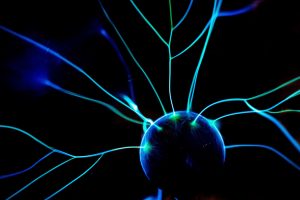University scientists discover a compound that may slow the progression of ALS.
Northwestern University researchers have identified the first compound, NU-9, that eliminates the ongoing degeneration of brain neurons in the paralyzing disease known as amyotrophic lateral sclerosis (ALS). It is also commonly known as Lou Gehrig’s disease after a famous baseball player who suffered from ALS. Sporadic ALS occurs in 95% of people with the disease, meaning it can be present without a clear cause, while the other 5% is known as familial ALS (FALS), which has a genetic component.
ALS is a neurodegenerative disease in which upper motor neurons degrade in victims to the point that those diagnosed lose essential motor function and eventually pass away from the disorder. Other motor neuron diseases, such as hereditary spastic paraplegia (HSP) and primary lateral sclerosis (PLS), follow a similar pattern. Thus far, there has been no drug or treatment for the brain component of ALS and these other conditions.

“Even though the upper motor neurons are responsible for the initiation and modulation of movement, and their degeneration is an early event in ALS, so far there has been no treatment option to improve their health,” said senior author Hande Ozdinler, associate professor of neurology at Northwestern University Feinberg School of Medicine. “We have identified the first compound that improves the health of upper motor neurons that become diseased. Improving the health of brain neurons is important for ALS and other motor neuron diseases.”
Ozdinler and study co-author Richard B. Silverman, a Northwestern chemistry professor, published their findings in Clinical and Translational Medicine. In previous lab tests, Silverman had identified a nontoxic compound called NU-9 and its ability to “reduce protein misfolding in critical cell lines.”
“I am very excited to find out if our hypothesis that stabilizing upper motor neurons in mice will translate to humans and NU-9 will provide hope for those inflicted with currently untreatable upper motor neuron diseases,” Silverman said.
“The NU-9 compound addresses two of the important factors that cause upper motor neurons to become diseased in ALS: protein misfolding and protein clumping inside the cell. Proteins fold in a unique way to function; when they misfold they become toxic to the neuron,” the researchers write. “Sometimes proteins aggregate inside the cell and cause pathology as in the TDP-43 protein pathology. This happens in about 90% of all ALS patient brains and is one of the most common problems in neurodegeneration.”
The results seemed positive in lab studies of mice. “NU-9 helped repair upper motor neurons that become diseased due to increased protein misfolding. After administering NU-9, both the mitochondria and the endoplasmic reticulum began to regain their health and integrity resulting in improved neuron health. The upper motor neurons were more intact, their cell bodies were larger, and the dendrites were not riddled with holes,” they conclude.
Lead study authors Ozdinler and Silverman are members of the Chemistry of Life Processes Institute at Northwestern. The research was funded by grant R01 AG061708 from the National Institute on Aging of the National Institutes of Health, NUCATS, Northwestern University, Les Turner ALS Foundation and the ALSA TREAT ALS Award.


Join the conversation!